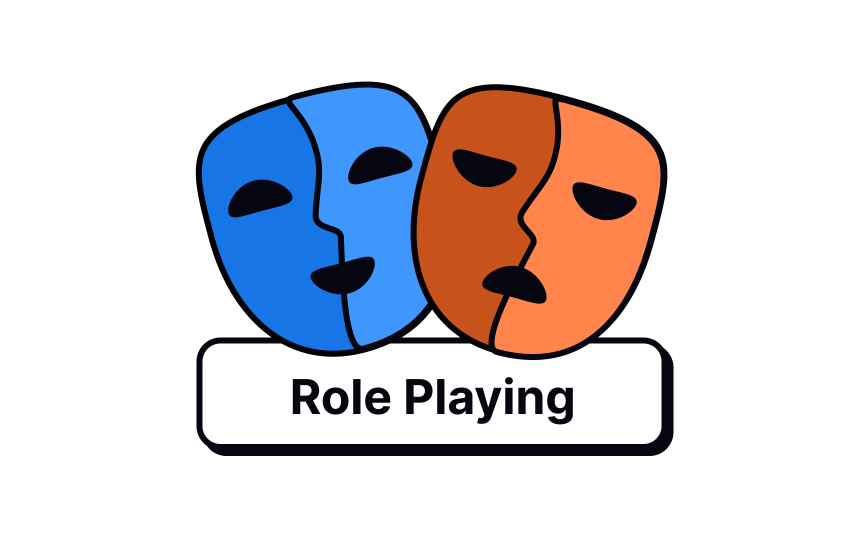Role-playing
Role-playing is an activity that involves acting out another perspective, such as a user’s, a system’s, or a team member’s. It improves empathy among participants and allows them to change the way they look at and approach a problem.
Role-playing can be of two types:
- Role-playing as a system: Here, a participant is asked to play the role of a system that interacts with a user. The participant can only answer the user (played by another participant) from a list of prompts that contain information that the system knows. This works as a review mechanism to assess gaps within the system and improve it.
- Role-playing as a user/team member: This helps participants look at an issue from multiple angles, for example, a developer’s, a project manager’s, a finance manager’s, etc. Assign a role to each participant, have them act out this role and generate ideas while they stay in character. This activity can be used to encourage new perspectives and reassess priorities.[1]
Pro Tip: Role-playing can be uncomfortable for many if it is outside their comfort zone. Make it easier by introducing props and changing up the layout of the room.

